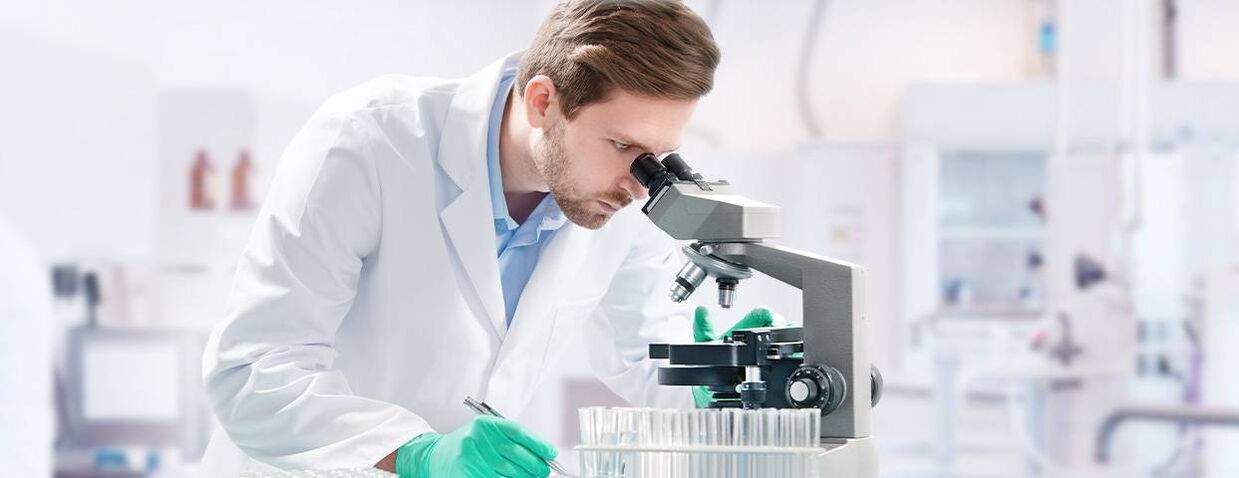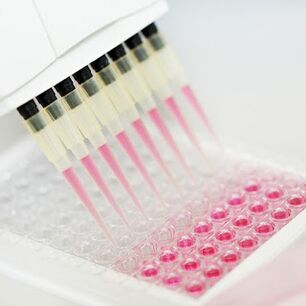In the human body they can parasitize many types of helminths, so there are various tests to detect them. Each diagnostic event has its own reliability percentage and is distinguished by certain characteristics of the implementation.
In the human body they can parasitize many types of helminths, so there are various tests to detect them. Each diagnostic event has its own reliability percentage and is distinguished by certain characteristics of the implementation.

Fortunately, unique techniques have been developed to detect parasite infestation at an early stage and start treatment early.
What tests will have to be passed to detect worms?
To determine the presence of parasites, an analysis is not always enough, since at different stages of development, worms manifest themselves in their own way.
The main types of analysis are distinguished:
- Preventive. Allow timely detection of helminthiasis. This can be done even in the absence of typical symptoms. It is recommended to carry out the study annually.
- Barrier. Reduce the risk of spread of parasites among the population. It is considered mandatory when obtaining a medical book.
- By doctor's order. Analyzes are given if there are characteristic signs of helminthic invasion: nausea, itching in the anus, pain in the abdomen and fatigue.
To accurately determine the presence of worms, you will need to pass several tests. Also, some of them happen several times.
Stool analysis for parasites.
Fecal analysis is the simplest analysis that is carried out in any district clinic. The results show the presence of worm eggs in the stool. It is in it that the eggs of helminths are contained.
Mature individuals can lay thousands of eggs per day. Some of them spread through the blood throughout the body. But, fortunately, most come out naturally.
For the analysis to be reliable, it is necessary:
- You need to pass up to 3 times. This is because the risk of a healthy person swallowing the eggs is high, although this does not mean that they will be infected immediately.
- Kal is administered at a time interval of 7 days.
- Feces are taken from different sites.
It is not necessary to collect material in the morning, this can be done in the evening, but it can be stored for no more than a day and in a cool place.
If a large number of eggs is detected during the study, another analysis is not required.
Complete blood count to detect worms
Such a study is known to everyone since childhood. Basically, the blood is drawn from a finger, but sometimes from a vein. The investigation will quickly determine the cause of any disease.
Usually a person does not suspect that he has worms. Therefore, it is important for the doctor to know the symptoms that are characteristic of the infection.
This analysis is capable of:
- Determine the cause of the symptoms.
- Detect the presence of parasites in the blood.
- Confirm the presence of other pathologies.
There is a misconception that helminths live only in the gastrointestinal tract. In fact, many species, having penetrated the stomach, then seep into the bloodstream and spread throughout the body. This is not without serious consequences. Parasites leave a trace, which doctors reveal in the blood.
hemotest
Finding information about this study is not easy, and the term itself is not familiar to many. In fact, for the patient, this is a procedure for donating blood for a general analysis. Differences in the laboratory studies themselves.
The task of the hemotest:
- Determination of the immunity of any product by the body.
- What is the reaction to them.
Basically, this study is prescribed by a doctor. Hemotest is capable of detecting parasites that could not be detected otherwise. This study is considered the most reliable.
Various manipulations are performed on the blood taken from the patient. It is affected by biological and chemical substances, observing the reaction. It is different, and some indicate the presence of helminths.
Such a test is quite complicated and is not performed in all clinics. The result is known after 2-5 days. In the presence of parasites, the test will give a positive reaction.
PCR analysis for worm detection
This diagnosis is considered an accurate and modern research method. PCR analysis is capable of detecting the presence of bacteria, intracellular parasites and viruses. Blood and other body fluids are drawn for analysis. If the presence of worms is suspected, the feces are used for investigation.
The detection of even a few parasite DNA fragments in the biomaterial indicates a helminthic invasion. PCR analysis is quite simple, the result is known after a few hours. This is facilitated by the use of special equipment. With this test, you can not do a lot of additional research, but quickly get the desired result.
Unfortunately, not all clinics have such equipment, and the cost of this analysis is quite high.
ELISA blood test for the detection of worms.

The most popular and reliable analysis today, experts call enzyme immunoassay for parasites.
The main goal of this highly accurate laboratory method is to detect antibodies against a particular type of parasite in the blood. Immunoglobulins (also called antibodies) are a natural reaction of the immune system and are intended to neutralize the negative agent.
An enzyme-linked immunosorbent assay (ELISA) shows a change in antibodies in the blood. The study is excellent for identifying parasites.
It is divided into 2 stages:
- immune system response. It can bind molecules, microorganisms and cellular elements to be detected.
- enzyme reaction. You can visually evaluate the results of the reaction.
Serological blood test
With the help of this laboratory method, infectious diseases are detected, as well as the phases of their development.
This test allows:
- Determine the immunological status of the patient. When infected with parasites, the immune system is significantly weakened.
- Detects the presence in the blood of bacteria that caused a decrease in immunity.
By the way, this study is used to determine the blood type.
giardia blood test
This analysis is considered to be of the highest quality. It consists of an enzyme immunoassay. The test determines the density of antibodies against worms of a given species.
When infected, IgM antibodies appear in the blood, and after 2 weeks - IgA and IgG.
The results of the study show Giardia infection up to 95%.
This analysis is also prescribed to assess the effectiveness of treatment. If the number of parasites decreases, then the recovery method is chosen correctly.
scraped off
A smear is taken to diagnose enterobiasis, that is, the presence of pinworms in the body.
Scraping is done in the following ways:
- Using a special spatula or a regular cotton swab.
- Use of adhesive tape.
This test is considered more effective than a regular stool test. It can be done independently or in the clinic. You need to take a cotton swab or adhesive tape and make a smear on the anus.
Do not wash before the procedure. If scraping is done at home, a spatula or tape (taped to the glass) is placed in an airtight container and taken to the lab. For a more accurate result, the analysis is given several times.
When and where should I get tested for worms?
Parasitic analyzes should be carried out when there are obvious symptoms of helminthic invasion: With asthenia, digestive problems, sudden weight loss and dermatological diseases. Also, the diagnosis of the presence of helminths is necessary in situations where a person has been treated for a chronic disease for a long time, and recovery does not occur. Pathology is often provoked not by physiological problems, but by the presence of parasites in the body.

Testing is mandatory for the following symptoms:
- Itching in the anus.
- Dysbacteriosis.
- Profuse salivation.
- Pale skin.
- urinary incontinence
- Constipation that turns into diarrhea.
- Pain in the abdomen of various localization.
- In women, the menstrual cycle is interrupted.
The analysis is given:
- at the district clinic.
- In a medical research laboratory.
- In a private clinic.
The main thing is that the medical institution has the necessary equipment and qualified personnel.
What tests are done to detect parasites?
Basically, one analysis is enough to detect worms in the body.
Recommended:
- pass lime
- Make a scrape.
Verification of these analyzes is done quickly. In most cases, they are sufficient to identify parasites. Sometimes a blood test is prescribed, but this procedure is more complicated, painful and expensive.
The interpretation of the results is carried out by the treating physician. Based on the indicators, the specialist makes the final diagnosis and selects a therapeutic program.
Preparing for testing for worms
It should be noted that no special training is required. But there are some guidelines and limitations.
They are the following:
- Before passing the analysis, it is necessary to eat mainly light foods or completely refuse them.
- You must stop taking the medicine 3 days before the test. Some components of drugs can distort the result of the study.
Be sure to tell the doctor about existing diseases. This also applies to pressure spikes, possible fainting and weak blood coagulation.
Every person who cares about their health should be checked for the presence of worms. Helminthiasis is considered a dangerous disease. The worms absorb substances needed by the human body and release toxins. Therefore, it is desirable to identify parasites in a timely manner so that they do not have time to cause serious harm to health.

















